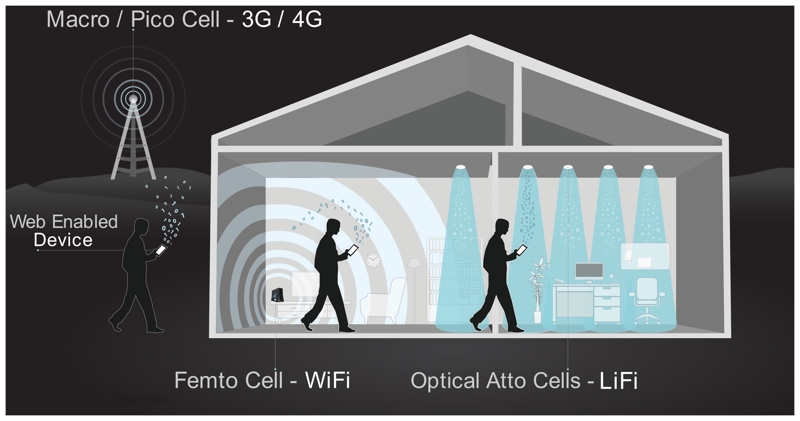Tech start-up company Velmenni has used Li-Fi-enabled lamps to transmit data at speeds of 1Gbps. Laboratory tests have shown theoretical speeds of up to 224Gbps.
The company tested the method of delivering data, which uses the visible spectrum rather than radio waves, in a working office.
The visible light spectrum is 10,000 times greater than the RF spectrum used in Wi-Fi, and Li-Fi can achieve about 1000 times the data density of Wi-Fi because visible light can be well contained in a tight illumination area, whereas RF tends to spread out and cause interference.
Velmenni tested the technology in an office in Tallinn, Estonia, to allow workers to access the internet and in an industrial space, where it provided a smart lighting solution.
Speaking to the International Business Times, chief executive Deepak Solanki said that the technology could reach consumers “within three to four years”.
The term Li-Fi was coined by Professor Harald Haas, co-founder and chief scientific officer at Edinburgh-based pureLiFi. He demonstrated the technology at a TED (Technology, Entertainment and Design) conference in 2011.
His talk, which has now been watched nearly two million times, showed an LED lamp streaming video. Professor Haas described a future when billions of light bulbs could become wireless hotspots.
One of the big advantages of Li-Fi is the fact that, unlike Wi-Fi, it does not interfere with other radio signals, so could be utilised on aircraft and in other places where interference is an issue.
But the technology also has its drawbacks – most notably the fact that it cannot be deployed outdoors in direct sunlight, because that would interfere with its signal.
Neither can the technology travel through walls so initial use is likely to be limited to places where it can be used to supplement Wi-Fi networks, such as in congested urban areas or places where Wi-Fi is limited, such as hospitals.
pureLiFi, established in 2012 as a spin-off from the University of Edinburgh, where its research has been in development since 2008, demonstrated a commercial Li-Fi network system, Li-Flame, this year at a major mobile technology show in Barcelona. “This is developing very quickly – it’s just a question of maturity,” says Nikola Serafimovski, pureLiFi’s director, product marketing. “My expectation is that this will be a widespread technology in a 24-month timeframe.”
Picture: pureLiFi
For more lighting news visit www.novelenergylighting.com
led lighting · li-fi · lifi · Novel Energy Lighting · wifi lighting · wireless lighting


